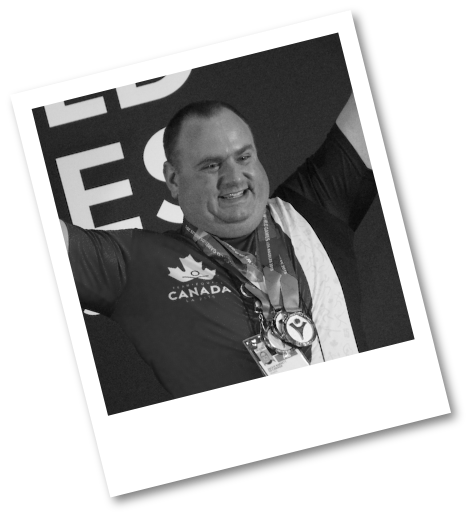The Story of
Jackie Barrett
L'histoire de
Jackie Barrett

About John "Jackie" Barrett
À propos de John "Jackie" Barrett
Fracassant les obstacles tout comme il battait les records, Jackie Barrett est devenu le premier athlète d’Olympiques spéciaux à être intronisé au Panthéon des sports canadiens, le seul musée national du sport au Canada.
What's included?
-
Four pre-recorded modules
-
Movement Breaks
-
Learning Outcomes
-
Lessons Plans
-
Fully Bilingual
-
Disability affirmation and inclusion
-
360° view of artefacts
Grades
Post-secondary
Subjects
Outcomes
Length
Qu’est-ce qui est inclus?
-
Quatre modules vidéo préenregistrés
-
Pauses actives
-
Résultats d’apprentissage
-
Sous-titres en français
-
Plans de cours
-
Affirmation et inclusion des déficiences
-
Vues à 360 degrés d’artefacts
Niveaux scolaires
Postsecondaire
Matières
et de la santé, Études sociales, Français et études des langues, Anglais langue seconde, Préparation à la vie personnelle et professionnelle
Résultats d’apprentissage
la communauté et la société, Conscience sociale, Formation du caractère, Citoyenneté active, Sentiment d’appartenance,
Modèles et exemples d’une vie active, Bénévolat et service communautaire,
Savoir-faire physique, Textes alternatifs, Perspectives francophones
Durée
Course Modules | Modules des cours
Module Credits | Crédits
Created in Partnership with
Créé en partenariat avec


We’d like to express our sincere appreciation to our invaluable partners at Winsport for graciously opening their facility to support program filming.
Nous aimerions exprimer notre sincère reconnaissance à nos partenaires inestimables chez Winsport, qui nous ont ouvert les portes de leurs installations pour appuyer le tournage du programme.


Submit your application to be part of Canada's Sports Hall of Fame's Educator Advisory Committee and help shape meaningful sport education programs that inspire and engage students across Canada.
Courtesy of Order of Sport collection, Canadian Museum of History.
2. Consider analyzing materials (i.e., is it wood, stone, plastic, etc.?)
4. Are there any inscriptions (i.e., are there any markings that are printed, stamped, engraved)?
5. What symbolism do you see?
6. How is the object oriented? (i.e., Does it have a presumed front, back, bottom, or top?)
7. What features do you think it might share with similar objects?
8. Does the object prompt some kind of action or performance?
9. What is this artefact?
10. What stories or information do you think it tells?
Rowing is the propelling of a boat using a fixed oar as a lever. In modern sports, rowers race against each other as individuals or in crews of two, four or eight.
Courtesy of Order of Sport collection, Canadian Museum of History.
2. Consider analyzing materials (i.e., is it wood, stone, plastic, etc.?)
4. Are there any inscriptions (i.e., are there any markings that are printed, stamped, engraved)?
5. What symbolism do you see?
6. How is the object oriented? (i.e., Does it have a presumed front, back, bottom, or top?)
7. What features do you think it might share with similar objects?
8. Does the object prompt some kind of action or performance?
9. What is this artefact?
10. What stories or information do you think it tells?
Rowing is the propelling of a boat using a fixed oar as a lever. In modern sports, rowers race against each other as individuals or in crews of two, four or eight.
Courtesy of Order of Sport collection, Canadian Museum of History.
2. Consider analyzing materials (i.e., is it wood, stone, plastic, etc.?)
4. Are there any inscriptions (i.e., are there any markings that are printed, stamped, engraved)?
5. What symbolism do you see?
6. How is the object oriented? (i.e., Does it have a presumed front, back, bottom, or top?)
7. What features do you think it might share with similar objects?
8. Does the object prompt some kind of action or performance?
9. What is this artefact?
10. What stories or information do you think it tells?
Rowing is the propelling of a boat using a fixed oar as a lever. In modern sports, rowers race against each other as individuals or in crews of two, four or eight.

